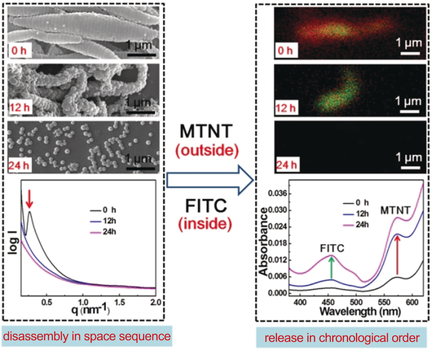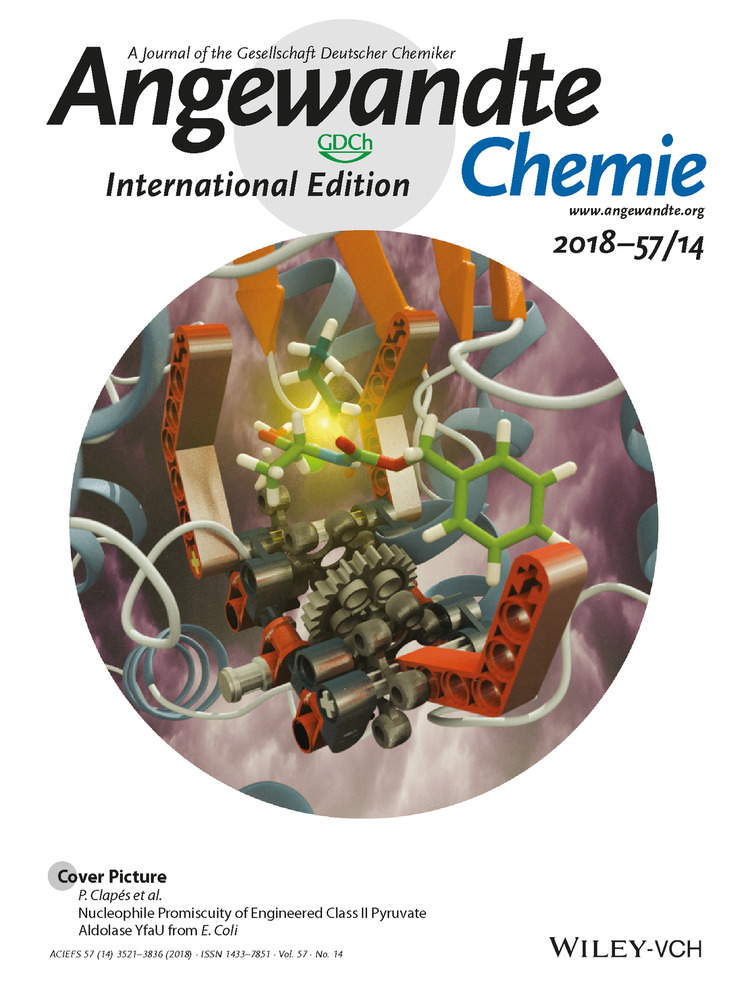Disassembly of Multicompartment Polymer Micelles in Spatial Sequence Using an Electrostatic Field and Its Application for Release in Chronological Order
Graphical Abstract
Multicompartment micelles (MCPs), comprising sequences of repeated elemental discoid parts connected by fasciculus, can be disassembled through consequent release of small spherical micelles using an electrostatic field. During this disassembly process, release of loaded species (MTNT and FITC) can be achieved from the MCPs in chronological order.
Abstract
Multicompartment micelles (MCPs), comprising sequences of repeated elemental discoid parts connected by fasciculus, were formed by self-assembly of polystyrene-block-poly(2-vinyl pyridine)-block-poly(ethylene oxide). Using an electrostatic field, the MCPs can be disassembled through consequent release of small spherical micelles. During this disassembly process, release of loaded species can be achieved from the micelles in chronological order. Two location-selected cargos (mitoxantrone (MTNT) and fluorescein isothiocyanate (FITC)) in the outer and inner compartments of the micelles can be released in chronological order. Under the applied electrostatic field (intensity: 16 kV cm−1), the loaded MTNT was rapidly released with more than 80 % release, whereas the loaded FITC was slowly released with less than 20 % release in 12 h. At a later stage (after more than 12 h), the loaded MTNT was slowly released with less than 20 % release, while the loaded FITC was rapidly released with more than 80 % release.





